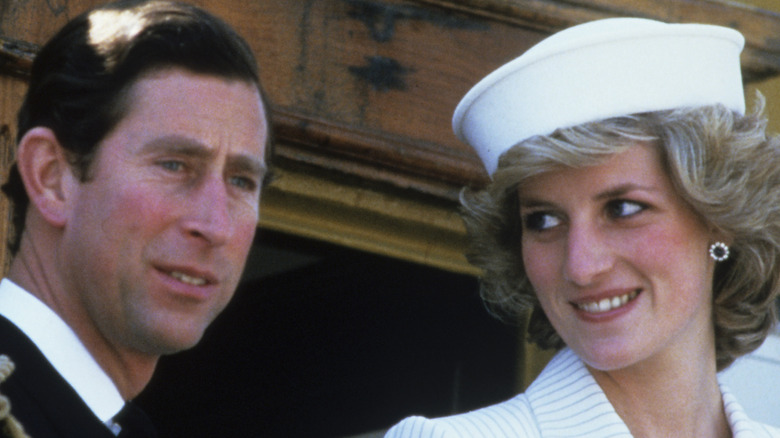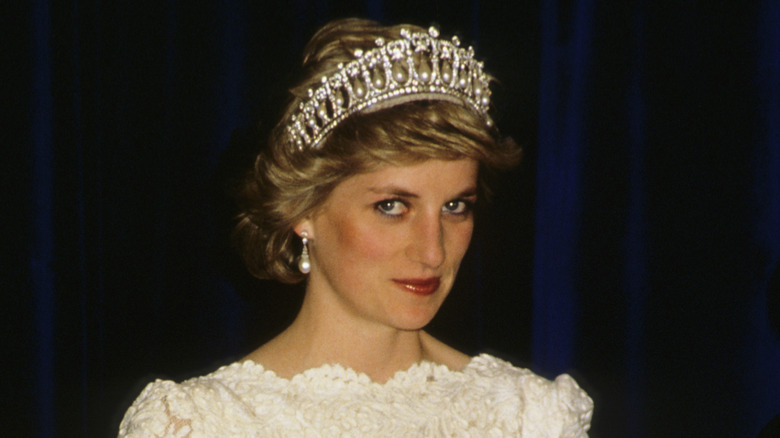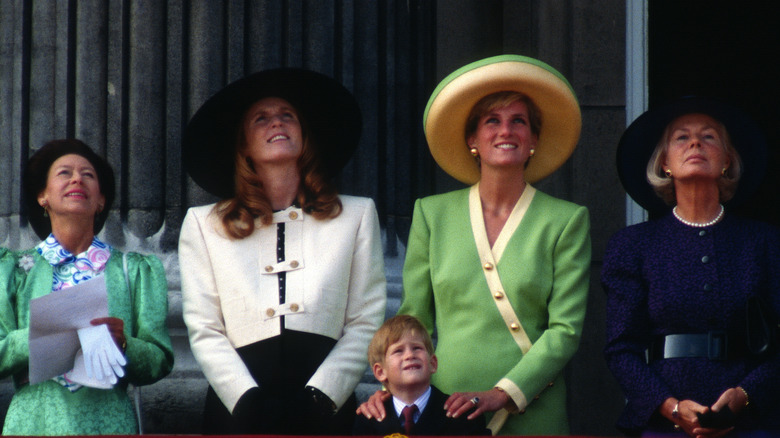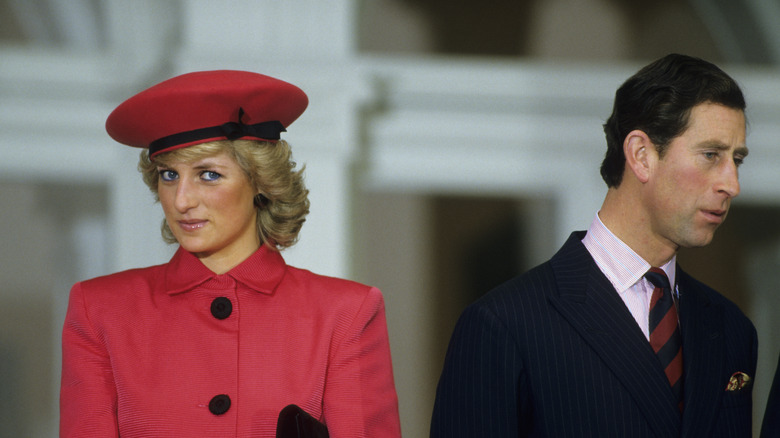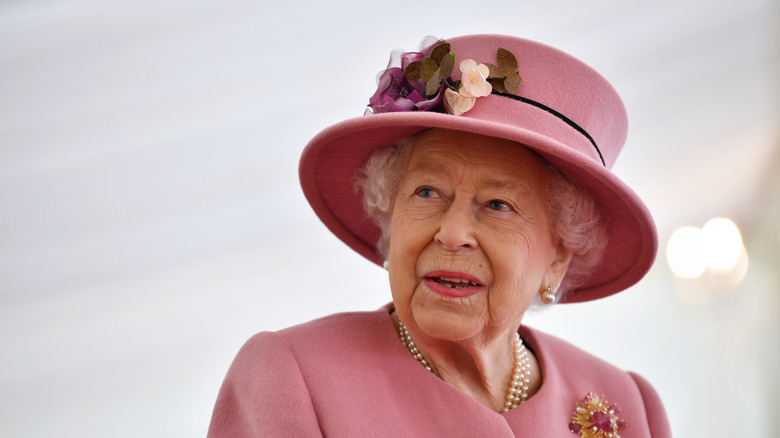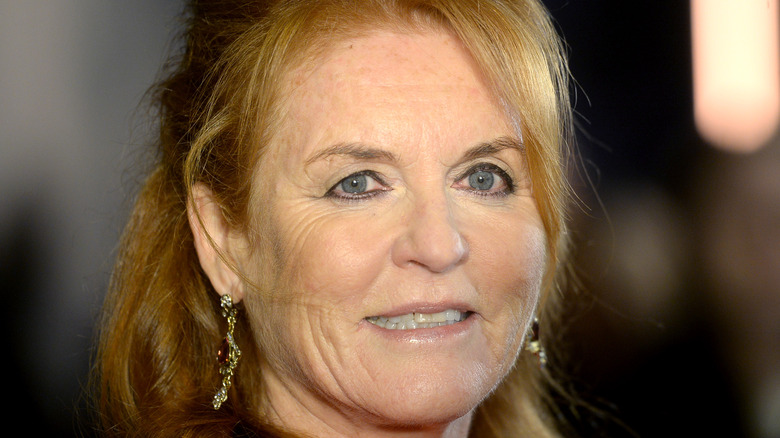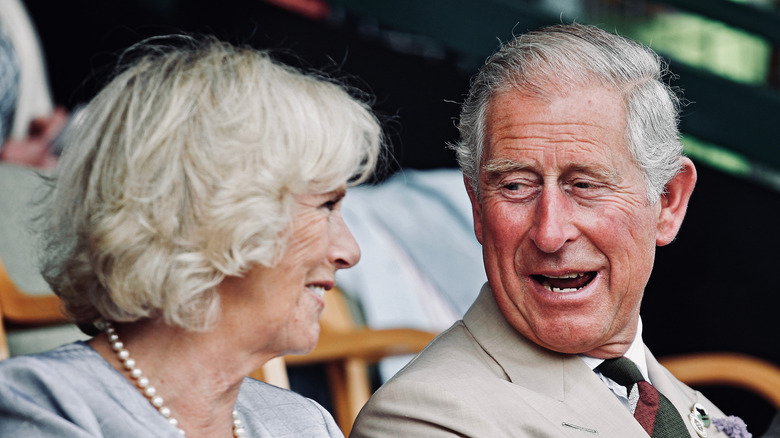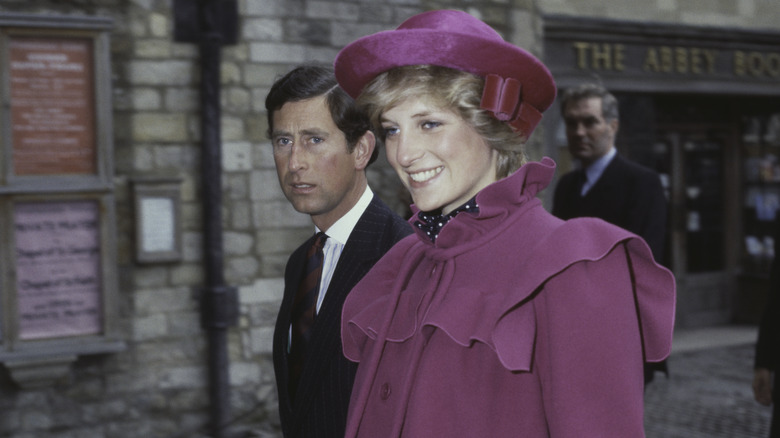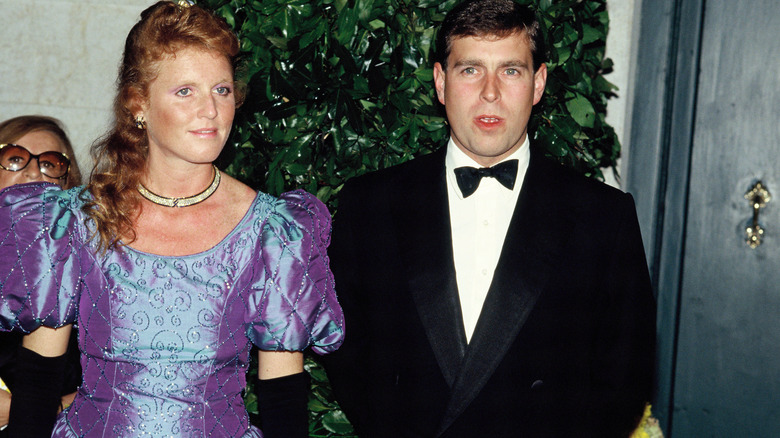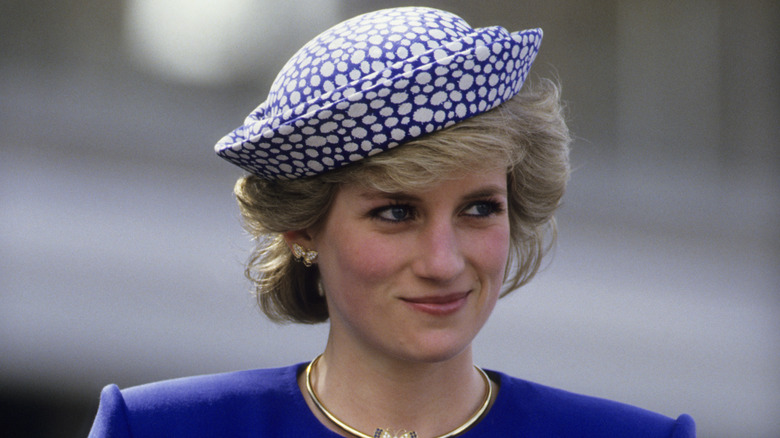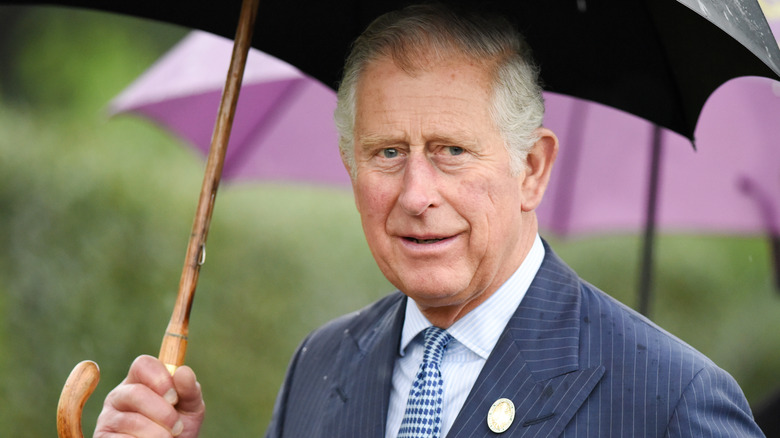Rules Royals Have To Follow When Getting Divorced
Divorce is never fun — besides the heartache of breaking up with someone you thought you'd love for life, there's the administrative torture of working out a divorce settlement, not to mention the humiliation of knowing your friends and acquaintances are all gossiping behind your back about how and why your marriage crashed and burned.
And if you're a high-profile person who's always in the public eye, the stresses and potential for humiliation are multiplied. For instance, the very public breakup of the seemingly fairytale marriage between Britain's Prince Charles and Princess Diana Spencer, which she described candidly in an interview with the BBC, can most diplomatically be described as a train wreck. To add to the royal family's misery, the divorces kept on coming: They included the queen's sister, Princess Margaret, two of the queen's other children, and several other less-prominent royal couples, according to Insider.
Love and loss may be universal, but for those leaving the royal family, divorce isn't as simple as signing a few papers and getting on with your life. What happens next will not only be determined by you and your soon-to-be ex, but by the expectations and demands of the royal family, the press and public, and hundreds of years of British history and tradition. So, read on to learn the rules that royals have to follow when getting divorced.
Divorced former royals can keep some of their titles until they remarry
One of the nicest perks about marrying into the royal family is getting your very own royal title. As noted by PopSugar, when the former Diana Spencer married Prince Charles, she became known as "Her Royal Highness, Princess of Wales." When Sarah Ferguson married Prince Andrew, she became known as "Her Royal Highness, Duchess of York." These titles broadcast to the world that these new brides were now an official part of the royal family with all the status and privileges that come with royalty.
But, if your royal marriage fizzles, so can your right to hold on to your royal title. Playing your cards right and staying on the queen's good side, however, can offer you some protection. When Charles and Diana called it quits, the queen was happy to let Diana keep her title. Charles, though, was not so pleased with this idea, so a compromise was struck: Diana would continue to be known as "Diana, Princess of Wales" but was no longer entitled to the honorific "Her Royal Highness." When Andrew and Fergie officially split, a similar compromise was struck: She lost the honorific "Her Royal Highness," but continued to be known as "Sarah, Duchess of York." The catch? In both cases, their titles would be rescinded if they remarried.
Former royals may be allowed to keep some royal privileges with the queen's permission
Not all royal divorces are created equal. You can walk away with a generous settlement (as Princess Diana did following her divorce from Prince Charles, according to The New York Times) or literally lose your head (as did Anne Boleyn and Catherine Howard, the second and fifth wives of King Henry VIII, as noted by History.com). If you split from the royal family today, it's a pretty good bet you'll walk away alive, thank goodness. But how much you walk away with depends on your standing with the royal family — specifically, the wishes of the queen, who has the power to even ban royal titles.
After Diana and Charles divorced, Diana not only received a settlement, but also the right to keep her apartment in Kensington Palace. According to PopSugar, the queen granted her his privilege to maintain "a central and secure home for the Princess and the children." Diana was also allowed to use other royal resources — such as the family's private planes — with the queen's explicit permission, since the queen recognized Diana's public popularity and its benefits to the royal family. Other divorced royals, however, weren't so lucky. When Charles' sister Anne divorced Captain Mark Phillips following revelations he'd fathered a child out of wedlock, he was booted from his royal residence, according to UPI — though he was allowed to visit his children with Anne at will.
The queen can't exactly forbid a royal divorce
The short answer to whether the queen can forbid royal couples to divorce is "not anymore," but that doesn't mean the queen doesn't keep a close watch on her family members' love lives and their potential impact on the royal family's image and reputation. Historically, however, the monarch had the absolute last word on whom family members could marry and had veto power over family members' potential mates. In the 1890s, divorce was still considered scandalous, and Queen Victoria forbade her daughter, Princess Victoria, from ending her arranged marriage to Grand Duke Ernst of Hesse, despite her misery and questions about his sexuality, according to HistoryExtra. It was only after the queen's death in 1901 that the unhappy couple was finally able to divorce.
From the dizzying number of divorces in the royal family in recent years — including three of Queen Elizabeth's four children and several other family members, according to The Washington Post — it's clear the queen is no longer in a position to force couples to stay together. But she can put her royal thumb on the scale when needed. According to PopSugar, while Charles and Diana tried to hold their unhappy marriage together for the sake of appearances, an escalating series of scandals drove the queen to ask them to end everyone's misery and just get divorced. So, today, the queen isn't limited to discouraging divorce — she can give it her blessing.
Divorce announcements are a thing
Public relations experts say a wise strategy when public figures get divorced — especially when it's your fault — is to be transparent and just fess up. By doing so, the experts say, you fend off rumors and speculation and earn some sympathy points for being accountable and honest. And no institution understands the benefits of fending off rumors and speculation better than Britain's royal family, whose members are not only born with silver spoons in their mouths but cameras and recorders trained on their every move.
So, when it comes to the awkward and sad matter of disclosing the end of a royal marriage, the royal family recognizes the need to come clean. Divorce announcements for high-ranking royals come from high places — according to the Evening Standard, Prince Charles and Princess Diana's separation in 1992 was officially announced by then-Prime Minister John Major, and the breakup of Princess Anne and Mark Phillips was announced by Buckingham Palace.
Those who lose their royal titles after divorce must do this when around royal family members
The problem with marrying into power is that it's never really yours — your spouse is just letting you share it. This could be a great arrangement if you have a happy, stable, and trusting marriage. If not, all bets are off. And two prominent former royals — Princess Diana and Sarah, Duchess of York — learned this the hard way. When they divorced their royal husbands, they not only lost their marriages, but the right to be addressed as "Her Royal Highness."
This was not only galling because it was unnecessary (according to PopSugar, the queen was happy to let Diana keep the HRH honorific, but Charles wasn't), but also because it had a very real impact on how they would live their future lives and relate to their former in-laws. By royal tradition, this honorific bestows certain very real privileges, one of which is the obligation of everyone outside the royal family to bow or curtsy to you. Losing her title meant Diana was now technically required to curtsy to all her former in-laws — including her children. But at least one of her children realized the unfairness of the situation. According to PopSugar, Prince William, then only 14, promised to make things right. "Don't worry, Mummy," he reportedly said. "I will give it [the title] back to you one day when I am king."
If you marry a divorced royal, public opinion may determine which rules apply
Marrying a divorced person means accepting that person's history and baggage. And if you marry a divorced royal, you not only marry into wealth and privilege, but you also get the dubious privilege of living in the shadow of your spouse's ex. Additionally, your eventual rank and treatment often depends on how well-liked the ex was.
Take, for instance, the case of Camilla Parker-Bowles, now known as the Duchess of Cornwall and second wife of Prince Charles. You have to admit she had enormous shoes to fill. Following in the footsteps of globally-beloved Princess Diana — and despised by many as the perceived cause of Charles and Diana's divorce — meant both Camilla and the rest of the royal family needed to navigate a public-relations minefield. Because the Church of England frowns on remarriage after divorce, she and Charles were officially married in a civil ceremony, which the queen did not attend, according to PopSugar. (The queen did, however, attend a private "blessing" ceremony afterward.)
Then there was the question of her title: According to the Express, a 2015 poll showed that 55% of the British public did not feel she should become queen when Charles ascends to the throne — and among those in this cohort are Charles' children, Prince William and Prince Harry. In deference to public opinion, Camilla agreed to settle for the title "HRH the Princess Consort" once Charles becomes king.
It's way easier for royals to get divorced today than in years past
Historically, divorce was a huge no-no not just for the royal family, but for all British citizens. Back in the early 1500s, the only way out of an unhappy marriage was an annulment, which was hard to come by, according to History.com. So, when King Henry VIII failed to convince the church to annul his first marriage to Catherine of Aragon, he took radical action: He broke away from the Catholic Church and founded the Church of England, appointing himself as its head. This set the stage for his infamous series of marriages and divorces. But despite the leniency the church granted Henry VIII in his divorces, it wasn't quite so generous to other church members. An act of Parliament was required to grant a divorce, and even when civil divorce became possible in 1857, it was much frowned upon, especially for royals.
Still, times change, and to stay relevant, the Church of England and the royal family had to change, too. In 2002, the Church of England finally authorized its priests to officiate at second and occasionally "further" marriages involving divorced people, according to The Washington Post. Today, royal divorces raise eyebrows, but no longer constitute a crisis. And divorce is no doubt a healthier solution to a loveless royal marriage than the traditional solutions related by religious scholar and priest Oliver O'Donovan to The Washington Post: "mistresses and poison."
When it comes to divorce, the royal family encourages a long separation for cooling off
Divorce may now be fairly commonplace in the royal family, but it's not taken lightly, especially among higher-ranking royals. Public image still matters, as does setting an example for one's subjects. Thus, when royal marriages start to go south, bailing out immediately is rarely an option. Instead, couples are urged to power through, work things out, or, at the very least, keep a stiff upper lip and make the best of a bad situation. In an interview with the BBC, Princess Diana recalled the emotional pressure of keeping up the public appearance of a unified front as her relationship with Prince Charles fell apart. "My husband and I had to keep everything together because we didn't want to disappoint the public, and yet obviously there was a lot of anxiety going on within our four walls," she said.
Despite the couple's obvious unhappiness — starting around the time they married in 1981, according to History.com — a sense of duty compelled them to stay together. They didn't separate until over a decade later, in 1992, and didn't divorce until 1996, when the queen recognized their fractious relationship was doing the royal family's reputation more harm than good, according to History.com. When her sister-in-law, Sarah, Duchess of York, divorced Prince Andrew in 1996, the dissolution of their marriage followed a similar template —they, too, remained separated for four years before officially divorcing, according to Town & Country.
The royal family has no official rules guiding financial settlements
The only hard-and-fast rule to royal alimony after divorce is that there are no rules. But leaving the royal family can come with some cushy consolation prizes, depending on how your ex and the rest of the royal family feel about you. Even King Henry VIII, best known for having several exes beheaded, offered an amicable and generous settlement to his fourth wife, Anne of Cleves — according to History.com, she lived out the rest of her life comfortably as the "King's sister."
So, if your royal marriage falls apart and you want to keep living at the standard to which you've become accustomed, making yourself indispensable to the royal family's reputation is a smart move. Because of her popularity — and her status as the mother of a future king — Princess Diana was not only given a financially generous settlement ($22.5 million in cash), but also $600,000 a year to maintain her private office, as well as limited access to the royal family's private planes for official travel and some of the properties for entertaining, according to The New York Times. In contrast, Sarah, Duchess of York, did not fare so well in her divorce from Prince Andrew. As reported by Town & Country, she'd made the strategic error of alienating the royal family, so her settlement amounted to a mere £600,000 (or $836,952), according to the Mirror.
Remarriage following divorce is frowned upon in the royal family
Divorce has long been a touchy subject for the royals, and, until recently, even being romantically associated with a divorced person was cause for scandal. This is because of the close ties between the royal family and the Church of England. Because the monarch was not only the symbolic head of the kingdom, but also the head of the Church of England, the royal family was obliged to honor the church's edicts. Until 2002, the Church of England forbade remarriage after divorce, according to The Washington Post, as it simply wouldn't do for a monarch, as official "Defender of the Faith," to be seen condoning divorce, especially within the royal family.
This restriction has led to much heartache in the royal family — as the Lincoln Journal-Star noted, King Edward VIII chose to abdicate the throne to marry divorced American Wallis Simpson, and early in Queen Elizabeth's reign, she forbade her younger sister, Princess Margaret, from marrying divorced royal staffer Peter Townsend, according to Town & Country. And while the royal family's prohibitions on divorce have loosened (Meghan Markle's previous divorce was a near non-issue in her marriage to Prince Harry, according to The Washington Post), divorced royals still feel obliged to keep a low profile when remarrying. When Prince Charles married his long-time mistress, Camilla Parker-Bowles (also divorced herself), he did so in a private civil ceremony — even though the Church of England already allowed second marriages by then.
